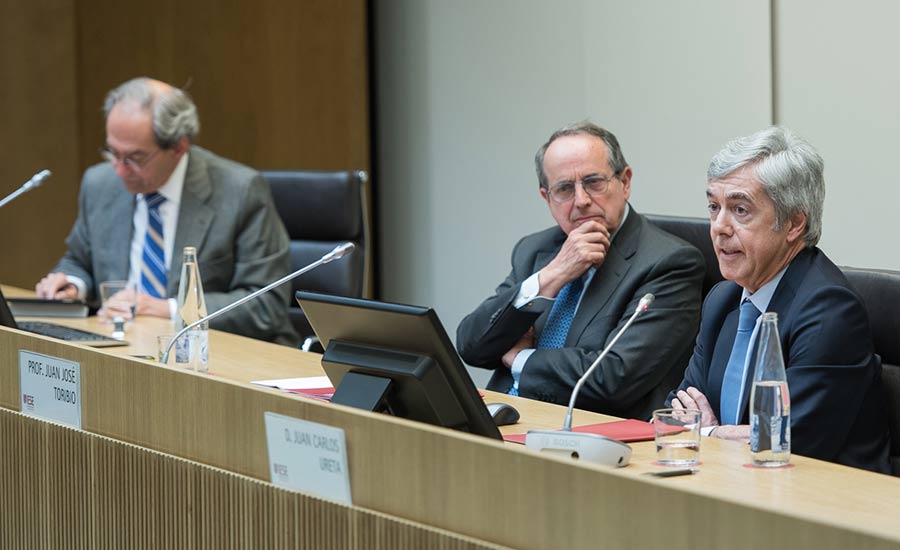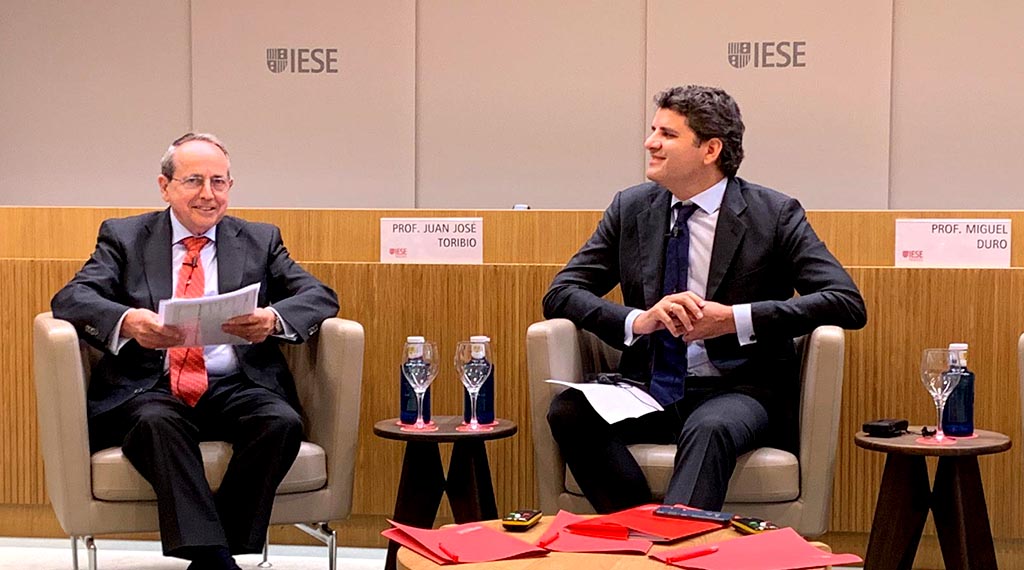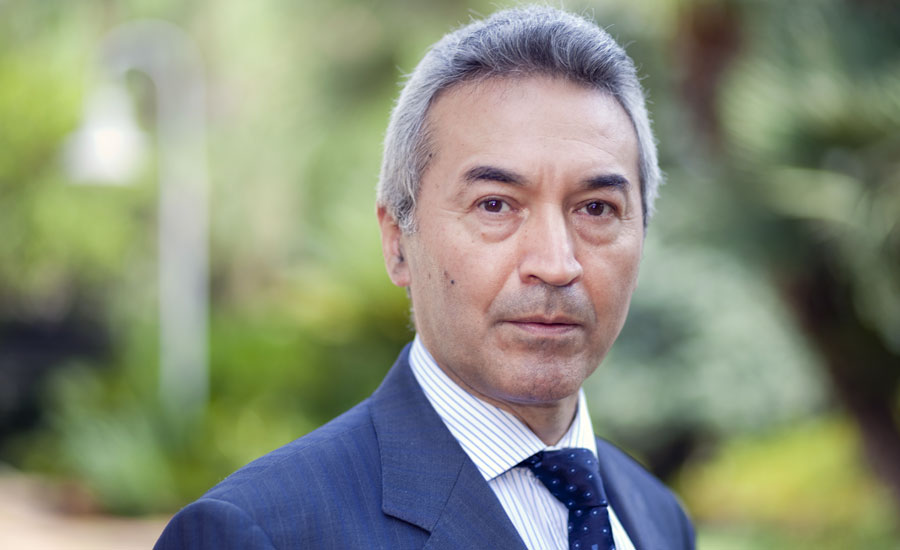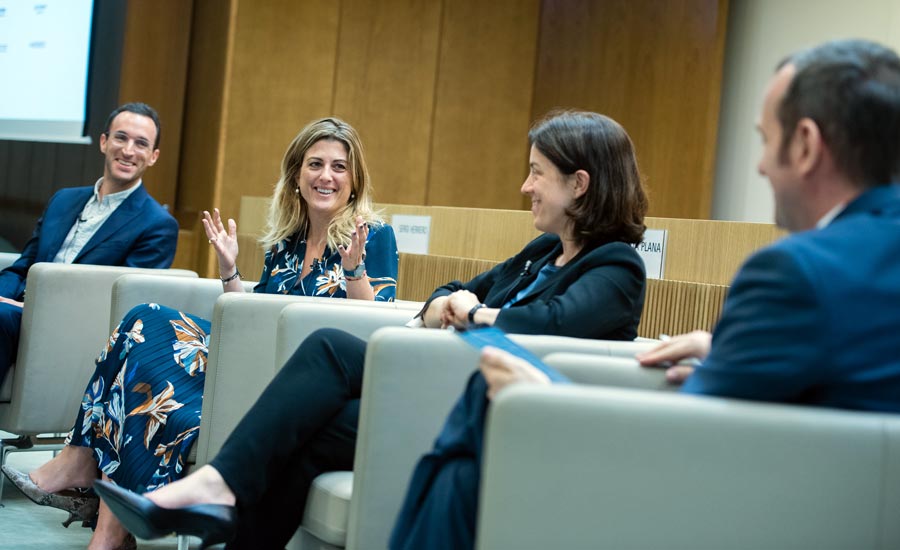Stories
Interest Rates Seen Rising in U.S. and Europe
Center for International Finance holds 24 th International Symposium
April 27, 2017

Monetary policy is expected to return to ‘normal’, as the U.S. Federal Reserve and European Central Bank contemplate interest rate hikes. This was the central theme of a debate that closed the 24th Annual Symposium of IESE’s Center for International Finance (CIF) last week in Madrid.
José Manuel González-Páramo, executive board director of BBVA and IESE professor, and Renta 4 investment bank President Juan Carlos Ureta participated in the discussion, moderated by Prof.Juan José Toribio.
Both bankers agreed that the time has come to reduce market liquidity and that the policies of the ECB and Fed will be harmonized in one way or another in the coming months.
Monetary Policy Tightening
Regarding future interest rate increases, González-Páramo said he’s convinced the Fed will increase rates by up to 2 percentage points in several steps and will also decide not to renew assets at maturitity.
As far as the European Central Bank is concerned, González-Páramo said that “we are on the path to abandoning the policy of buying securities, but it is still too early to know if the ECB will stop buying first and then raise rates, or whether it will do it in parallel“. González-Páramo said he believes that the rate hikes will be delayed until the end of 2018.
Ureta, the Renta4 president, also referenced the tightening of monetary policy in his remarks and said he hoped the central banks will act accordingly.
Ureta explained that he does not share in the euphoria of certain financial circles following the 2016 recovery, and offered a highly skeptical interpretation of events. I don’t want to be negative, he said, but I think it’s not a good time for complacency. In fact, the markets are sending mixed-messages, which seems to have produced a cooling effect on the initial wager, the idea that monetary normalization and Trump’s ‘reinflation’ would bring about growth.
Ureta said monetary normalization may not be as aggressive as predicted, and that Trump’s reinflationary policies may not be as exaggerated as forecast. But he pointed out that we must be aware of the signs: “In my opinion there are latent financial risks, and these, at any given moment, can be transmitted into the real economy.
In this way, he warned that if all Trump´s promises are kept, the dollar could expect to strengthen between 20% and 25%. “If this happened, the world banking system would suffer. You just have to look at debt figures in dollars,” he said.
He also focused on the Fed and the problems that could arise from future interest rate increases. “Asset markets are very sensitive to rate spikes and will be more so in the future, after years of downturns.”
Keys to Protecting Assets
In this context of a certain euphoria, but also one of volatility, Ureta considered what would be the best way to protect and monetize patrimony, and offered three keys:
- Connect financial investment with the real economy.
- Make research-driven investments, avoiding front running and carry.
- Ensure the price pays for the risk.
Having said this, he introduced a model of asset allocation characterized by the following strategies:
- Maintain high cash levels to take advantage of volatility.
- Bet on corporate, emerging and floating-rate bonds.
- Take positions in global companies and local companies.
- Make hedges via options.
- Use gold as an alternative asset.
- Conduct equity arbitrage.
Lower Growth, Lower Inflation
González-Páramo focused his commentary on 2017-2018 economic prospects. He offered a global economic outlook characterized by lower growth rates: 1.7% in the E.U., 2.3-2.4% in the U.S. and approximately 6% in China – and more moderate inflation expectations.
Regarding the Spanish economy, he highlighted the progress made since the end of the crisis: 3% growth for this year, vigorous exports and tourism and a declining public-sector deficit, which will fall from 4.3% in 2016 to 2.1% in 2018.
But he insisted that “it would be appropriate not to trust the future, because much remains to be done.” Moreover, he pointed to the remaining problems: unemployment, the difficulties of companies to access financing, productivity and legal obstacles that prevent SMEs from growing.
Throughout the day, the CIF’s research team, comprised of IESE Finance and Economics professors, also presented some of the most relevant research of the academic year.


